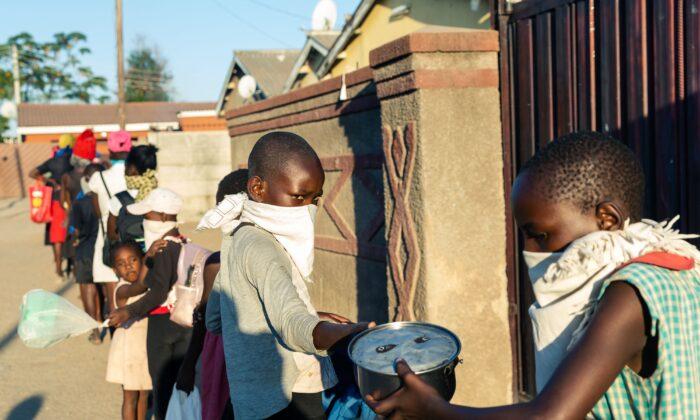Experts say that in recent years, growing economic freedom has lifted huge segments of the world population out of destitution.
But the sharp, sudden economic contraction caused by COVID-19 has inflicted serious damage on the global economy.
Steven J. Allen, distinguished senior fellow at the think tank Capital Research Center, told The Epoch Times that the effect of the spread of free markets “on the poorest people, has been to raise them out of poverty, and then, this comes along and just knocks them right back down.”
The lockdowns “don’t appear to have had any positive effect in terms of stopping the virus,” added Allen, who earned a doctorate in biodefense from George Mason University.
“Progressives [who have supported the lockdowns more strongly than conservatives] never really think about the impact their policies have on those who can’t afford them. It’s going to take years to recover from this.”
Extreme Poverty
Poverty shortens lifespans, experts say. COVID-19 and the tough governmental responses to the pandemic appear poised to set back the struggle against acute poverty by years, as the world braces for what could be the first increase in extreme poverty in 22 years, according to an Associated Press report underwritten by the Pulitzer Center on Crisis Reporting.The global extreme poverty rate plunged to 10 percent in 2015 from 36 percent in 1990 as the pool of very poor people shrank to 736 million from about 2 billion, according to World Bank data. This means that around 736 million people–half of whom are concentrated in Bangladesh, Congo, Ethiopia, India, and Nigeria—were scraping by on under $1.90 a day, the so-called international poverty line, as of 2015.
Policy experts worry that the pandemic and the accompanying restrictions aimed at mitigating it could drag 100 million people around the world back below the international poverty line, according to the World Bank.
“For well-off people in wealthy countries, the lockdowns are an annoyance and a bore. The lockdowns are a disaster for poor people in poor countries,” said Myron Ebell, director of the Center for Energy and Environment at the Competitive Enterprise Institute, a think tank.
“Decades of progress in lessening hunger and raising living standards are being wiped out by these criminally insane lockdowns,” he told The Epoch Times.
“In the short term, I wouldn’t be surprised if there is widespread hunger and even starvation in some poor countries. And it could take a decade or longer to overcome the economic devastation caused by the Wuhan virus panic.”
Some of the economic problems in countries outside the United States can be traced to weakness in the U.S. economy, said economist Christos A. Makridis, a research assistant professor at the W.P. Carey School of Business at Arizona State University.
“Supply chains across the world are so linked, so a decline in demand in the U.S. leads to even sharper declines in other countries because of their dependence on the U.S. market for their own economic activity,” he told The Epoch Times.
“Declines in their economic activity imply a deterioration in their health care infrastructures, too.”
‘Hunger Pandemic’
David Beasley, executive director of the U.N. World Food Program, said in the spring that while the world is facing the COVID-19 pandemic, it’s “also on the brink of a hunger pandemic.”“Millions of civilians living in conflict-scarred nations, including many women and children, face being pushed to the brink of starvation, with the specter of famine a very real and dangerous possibility.”
While 135 million people currently are close to the brink of starvation, Beasley said his organization projects that “due to the Coronavirus, an additional 130 million people could be pushed to the brink of starvation by the end of 2020. That’s a total of 265 million people.”
The intense focus on treating COVID-19 and finding a vaccine for the virus also is thought to crowd out research and the provision of health care for people with other diseases.
Tuberculosis occurs everywhere on the planet but tends to hit developing countries the hardest. It kills 1.5 million people around the world every year, more than any other infectious disease. There is a vaccine for children, but not adults.
COVID-19 may be more prevalent, but it harms fewer people than tuberculosis.
There have been 22.1 million cases of COVID-19 worldwide, resulting in 778,000 deaths as of Aug. 18, according to Worldometers.info. The case figure includes 14.8 million patients who have recovered.
This crowding-out effect is worrisome, but Allen said there’s also reason to be concerned that people have become so frightened of the virus that they are avoiding going to their medical doctor or the hospital because they are afraid that doing so will make them sick.
“Your immune system depends on you being exposed to other people,” Allen told The Epoch Times. “It needs to be trained.”






Friends Read Free